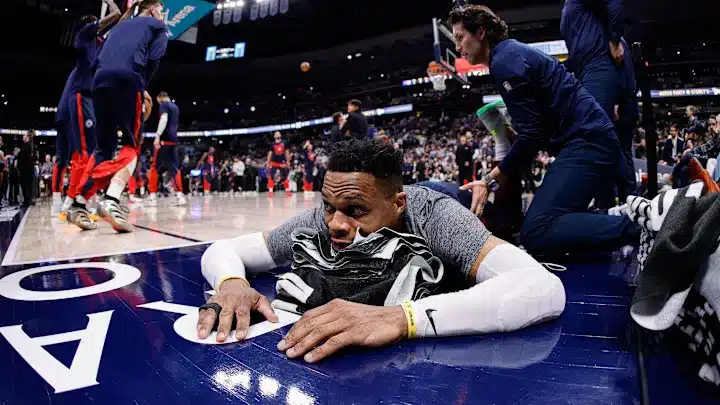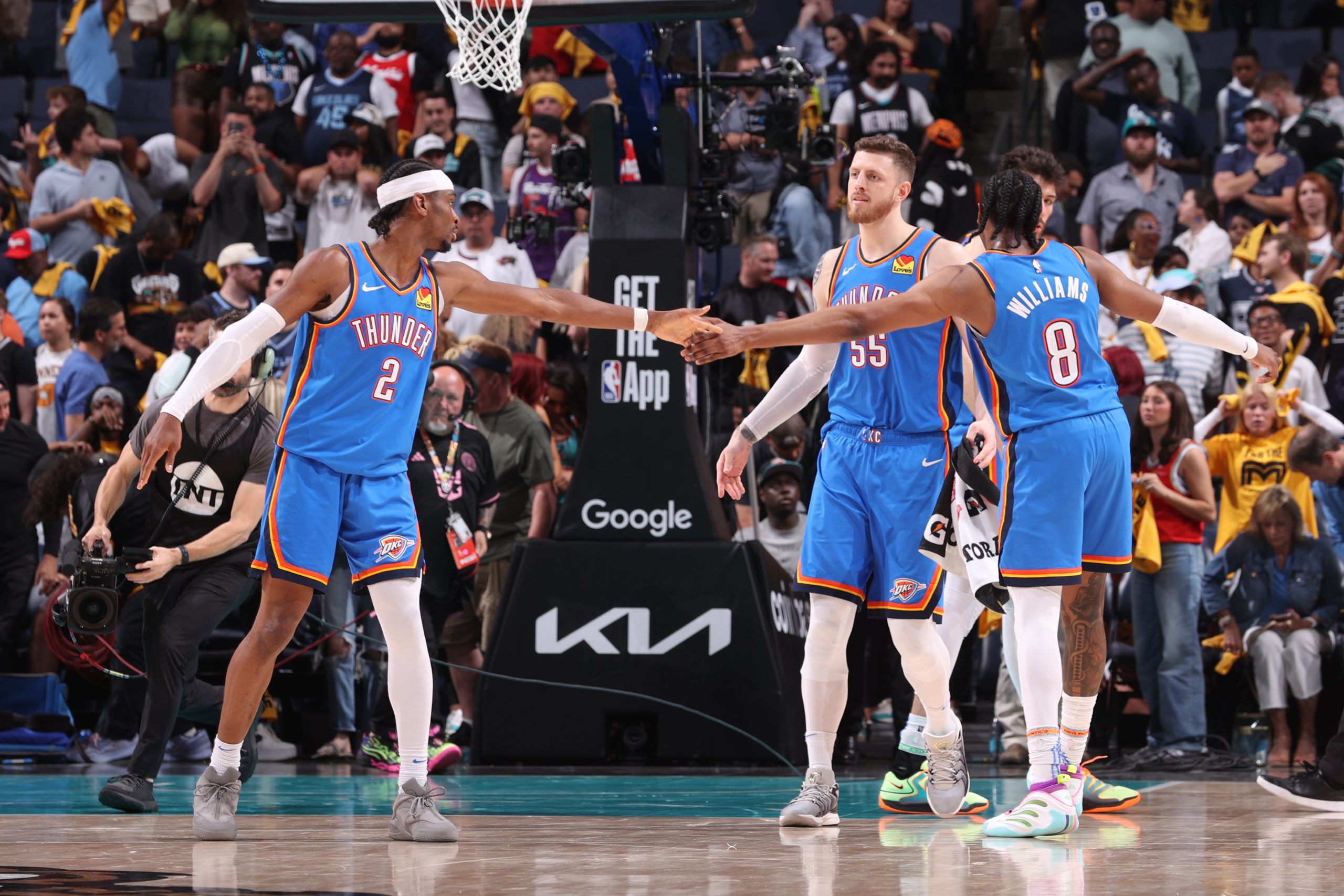Key Highlights:
- Of all Portland Trail Blazers who played at least 40 games for them last year, it was Duop Reath who led the team in Estimated Plus-Minus (EPM).
- Duop Reath ranked fourth among all centers who played at least 40 games last year in 3-point attempts per 100 possessions.
- Duop Reath is making roughly seven million dollars less annually than his production value would suggest.
Pop quiz (without looking): Of all the players who played at least 40 games last year for the Portland Trail Blazers, who is the one who led the team in Estimated Plus-Minus (EPM)?
If you guessed anyone there than Duop Reath, you were dead wrong. That’s right, the correct answer wasn’t the 100-million-dollar man Deandre Ayton. Not the prodigious rookie Scoot Henderson or the explosive combo guard Anfernee Simons. It was the team’s 27-year-old (now 28) undrafted rookie.
(Sidebar: The team’s leader in EPM is actually Malcolm Brogdon, but he only appeared in 39 games last season.)
Hidden in the fog of a Blazers roster that is chock full of fascinating young talent and mismatch veterans is Reath – a player who isn’t easily identifiable to even the most avid of NBA fans. Yet, despite his invisibility, Reath possesses a unique skillset for his size and position. One that – given the Blazers’ roster construction and organizational objectives (more on this later) – could make him one of the most underrated players on the trading block.
What Makes Reath So Interesting
The first feature I ever wrote for Basketball Insiders was centered around the premise that shooting can make you dangerous, both as a player and a team. As a 6’11 center who shot 35.9% from three, Reath does enough to qualify as a shooting big.
But, when it comes to spacing, accuracy is second to volume, and Reath has the latter in spades. Of the 72 centers who played at least 40 games last year, Reath finished fourth among all of them in 3-point attempts per 100 – trailing behind only Kevin Love, Lauri Markkanen, and Naz Reid (per NBA.com). Some notable names that he’s ahead of in this category include Kristaps Porzingis, Brook Lopez, Jaren Jackson Jr., Karl-Anthony Towns, Myles Turner, and Chet Holmgren.
Reath doesn’t just take a lot of threes. He also has multiple avenues for how he can flow into them. He can launch them on pick-and-pops (first clip in the montage below), off no-dip jumpers from the corners (second clip), or while executing a ghost screen action (third).
When you’re a good shooter, teams will try to limit the number of threes you take by instructing their players to run you off the 3-point line on closeouts (a technique known as the fly-by closeout). To counter this defensive tactic, shooters need to be able to drive these closeouts. Reath isn’t a graceful attacker who possesses a bevy of dribble moves and counter spins. For the most part, his drives are clunky and very uncreative. However, you can’t really argue with his results. According to the Thinking Basketball Database, Reath was in the 73rd percentile in true shooting on drives last season.
Reath is one of the most underrated offensive big men in the NBA. Last year, his Offensive EPM (OFF EPM) placed him in the 84th percentile leaguewide. Finding a center that possesses that kind of combination of shooting and driving is rare (we haven’t even mentioned how talented of a screener he is), and it usually comes with the tradeoff of damaging defense at the position where defense is most important.
Now, Reath isn’t some world-beater on that end of the floor. He’s not a fluid mover and he’s susceptible to biting on pump fakes (13th percentile in foul rate among bigs, per Cleaning the Glass). But he’s still a big body (6’11 with a 7’1 wingspan) who can provide some rim protection (78th percentile block rate) and plus hands at the center spot (54th percentile steal rate among bigs).
One-number metrics aren’t everything, but it is promising that Reath shares a Defensive EPM with Nikola Jokic (53rd percentile) – a player many folks view as an average defensive center nowadays. At the very least, it tells us that he’s a solid enough as a defender for teams to profit off his remarkable offensive game.
A Great Contract
Not only does Reath possess a low-supply, high-demand skillset, but he also offers it at a bargain price. As of writing this (August 2, 2024), Reath has two years left on his 3-year, 6.2-million dollar deal (per Spotrac). Next season, Reath will make roughly 2.1 million dollars. Based on a formula I like to use for calculating a player’s production value, that’s about 7.4 million dollars less than he’s actually worth.
Another good comparison point here is Jalen Smith – a player who is very comparable stylistically to Reath. This offseason, Smith agreed to a 3-year, 27-million dollar deal with the Chicago Bulls. Again, roughly seven million dollars more annually than Reath is making (although it is worth noting that Smith is four years younger).
Why He May Be Available For A Trade
Okay, so Reath is a good basketball player with a skillset that is hard to come by and a contract that pays him way below his fair market value. Why would the Blazers want to trade a guy like that?
Two reasons. First, as we touched upon earlier, Reath is an older player relative to his experience in the league. Next year will technically be his sophomore campaign, but he’ll be going through it as a 28-year-old. The Blazers, a team that is clearly rebuilding in a loaded Western Conference, likely don’t see Reath as someone who fits in their current timeline.
And second, even if he did fit their timeline, the Blazers have a real log jam at the center spot. Between Reath, Ayton, Robert Williams III, and the newly-acquired seventh overall pick Donovan Clingan, the Blazers have more usable bodies than they can reasonably handle.
Recently, there has been some reporting that teams have some interesting acquiring Williams. But even if a trade does come to fruition, the Blazers will probably still need to move Reath to make sure that Ayton and Clingan can have enough time to shine. Plus, given how valuable Reath’s contract is, the Blazers could definitely net some nice assets in a trade for him.
With all this said, Reath probably isn’t a starting-caliber center in the NBA. But he is one of the better backups money can buy, especially for a team that is looking for a change-of-pace player at that spot (the Los Angeles Lakers, Sacramento Kings, Cleveland Cavaliers, and New Orleans Pelicans are some names that come to mind). And considering hardly anyone outside of Blazers’ fans and NBA sickos knows who he is, I’d say that makes him a pretty underrated player.






